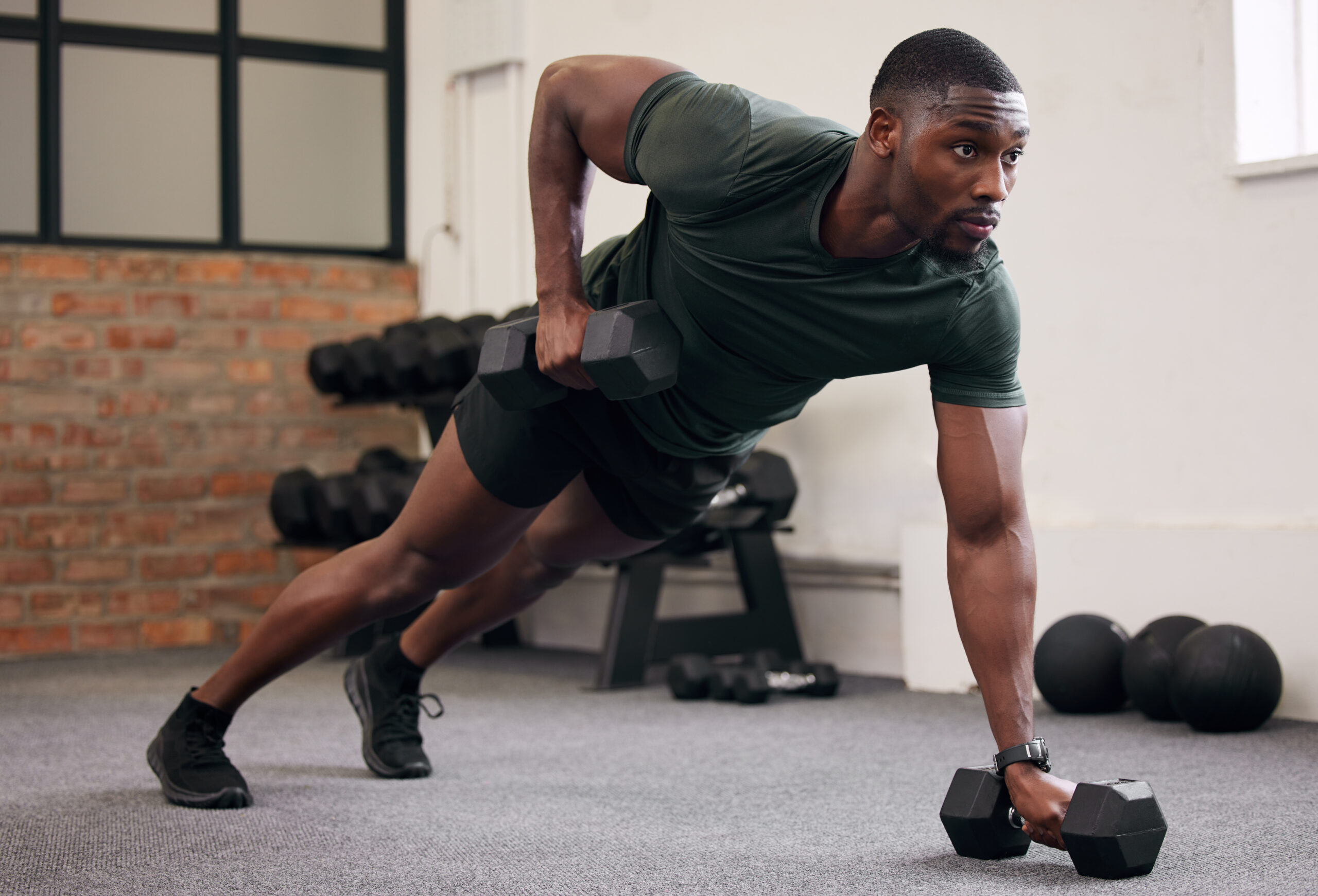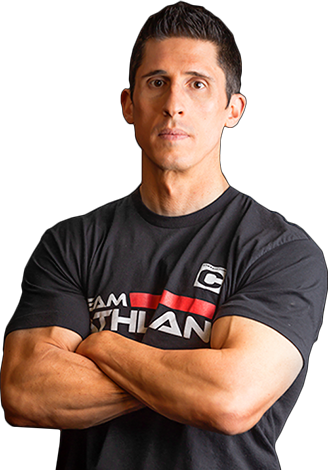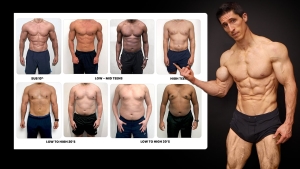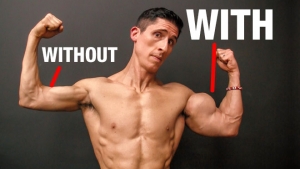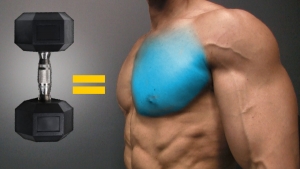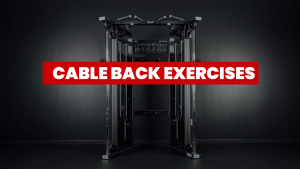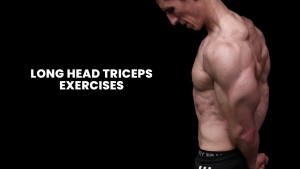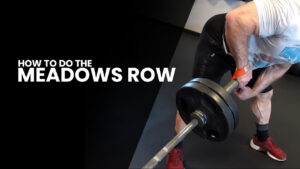The Calories Burned Calculator below will give you an estimate of how many calories you burn during common exercise activities or household activities. You can then use this data to determine whether you want to make changes to your diet or activity to gain muscle mass or lose body fat.
Fill out the details in the Exercise Calculator below based on your current weight, activity and number of minutes of exercise. Be as honest as possible about your weight and time spent so that you get the most accurate results.
Calories Burned Calculator
WHY TRACK CALORIES BURNED?
A lot of people hit the gym, crush their workouts, and proudly log a thousand-calorie burn. The trouble is that most of those numbers are nothing more than rough guesses.
The reality?
Your calorie burn depends on way more than the number on the treadmill display. It’s driven by your basal metabolic rate, your body weight, your lean body mass, and how long and how hard you’re moving.
Whether you’re lifting weights, running at different miles per hour, biking hills, or just knocking out housework, your energy expenditure is unique to you.
And for anyone serious about weight loss, building muscle, or maintaining a healthy body, knowing your real caloric expenditure matters. Because you can’t manage what you don’t measure.
That’s why we built the Calories Burned Calculator. It takes the guesswork out of your training and everyday life.
From the calories burned weightlifting to what you torch during a spin class, a walk, or even cleaning the kitchen, it shows you your actual calories burned based on your current weight, activity type, and time spent.
No more relying on averages for the typical person. No more confusion about daily calories, calorie intake, or the calorie deficit you need to drop those extra pounds.
Real results start with real numbers. It doesn’t matter if you’re tracking body fat, managing your calorie consumption, or just curious about how many calories per kilogram of body weight you burn during your weight training session.
Use this calorie burn calculator and finally know the truth behind your energy expenditure and how it lines up with your fitness goals.
KNOWING YOUR CALORIC NUMBER MATTERS
Most people in the fitness industry talk about burning calories like it’s an exact science.
The truth is, even the most average person can see massive differences in daily energy expenditure based on body size, exercise intensity, and how long they keep moving.
No two bodies use energy for physical activity in the same way.
And when it comes to transforming your body, understanding your true caloric expenditure can mean the difference between progress and plateau.
Here’s why it’s important to know your number for caloric expenditure:
REAL GOALS NEED REAL NUMBERS
Fat loss, building muscle, or simply keeping your body healthy all depend on precise numbers.
Your daily calorie requirements hinge on factors like body weight ratio, lean body mass, body height, and activity level.
A lot of people try to wing it, trusting their gut or the calories burned on the treadmill. Some fitness trackers aren’t particularly accurate either.
But guessing at your calorie loss or relying on averages like a 2,000-calorie diet often leaves people stuck.
That’s where a solid calorie calculator tool comes in. It turns broad estimates into tailored data based on your actual stats.
NOT ALL ACTIVITIES BURN THE SAME CALORIES
Think scrubbing the kitchen for an hour equals a full workout?
Reality check: in terms of calories, it doesn’t come close to intense exercise like heavy compound lifts.
Common exercises all vary wildly in how many dietary calories they burn.
The calorie difference between walking at three miles per hour and running at seven miles per hour can be huge.
Even a bike rides calorie burn changes depending on cycling speed, terrain factor, and duration of activity.
Using tools like a walking calorie calculator or a running calorie calculator helps you know your real energy expenditure instead of leaning on rough averages for the average person.
TRACKING KEEPS YOU IN CONTROL
Guessing how many calories per kilogram you burn is a quick way to stall progress.
Your body stores excess calories as a different form of fat, which is exactly what you’re working to lose.
On the flip side, too much daily calorie reduction can eat into muscle mass instead of body fat stores.
Tracking calories burned isn’t about obsession. It’s about keeping your calorie environment in check, so your dietary calorie intake matches your goals.
That’s why tools like a calorie deficit calculator, exercise calculator, or a comprehensive calorie calculator exist: to give you clarity instead of guesswork.
EVERYONE BURNS CALORIES DIFFERENTLY
Two people doing the same workout for the same period of time can have completely different results.
Variables like body composition, muscle and body fat weight, body size, and exercise intensity affect how your body uses energy towards calorie burn.
Older methods like the earliest equations or the Harris-Benedict Equation tried to predict daily energy expenditure using averages.
But real life isn’t average.
Your own calorie burn depends on your personal stats, how hard you push, and even factors like steps per mile, terrain, or how many approximate steps you hit in a day.
For example, walking 7,500-8,000 steps is good, but walking 15k steps makes a bigger dent in your calorie burn. Your pace has an even greater effect.
That’s why using a precise calorie calculator tool is a viable method for dialing in your plan and avoiding adverse effects from miscalculations.
HOW THIS CALORIE COUNTER CALCULATOR WORKS
Tracking calories with fitness isn’t supposed to feel like cramming for a math exam. But for most people, it does.
One look at charts, less than accurate equations, or confusing formulas, and the whole idea of knowing your real estimation of calories burned goes out the window.
We created this calories burned calculator tool to make the science simple, so you can keep your eyes on your fitness goals.
IT STARTS WITH YOUR STATS
Your body isn’t a machine with fixed settings. It’s dynamic. Every body stores energy and burns it differently.
Factors like body size, body weight, body composition, and fitness level determine how your body responds to exercise routines.
Tools like a body fat calculator help zero in on your personal body fat stores and lean body mass.
Knowing this helps the calculator estimate how many calories per kilogram you burn during daily activities or intense workouts.
This is the kind of precision you can’t get from random averages.
INPUT THE DETAILS THAT MATTER
This isn’t guesswork. The calorie calculator tool needs real inputs from you because your burn depends on the way you train and live.
Here’s what it takes into account:
Duration of Exercise: Short sessions like 15-30 minutes can still pack a serious punch if your exercise intensity is high. But longer workouts, anywhere from 45-120 minutes, allow you to rack up more total calories per time exercising, provided you maintain the effort. The calculator factors in the exact periods of time you spend moving, so you’re not relying on averages pulled from the average person.
Activity Factor: Not all movement is created equal. The calculator considers how hard you’re pushing. Low intensity activity such as casual walking or light stretching burns fewer calories per kilogram of body weight. Moderate intensity exercise including brisk walking, steady cycling, or controlled weight training means a bigger calorie burn. Finally, high intensity movement features elevated heart rate activity like HIIT, sprints, or high-rep circuits where exercise intensity increases dramatically.
Exercise Regimens: The way you structure your workouts matters just as much as how long or how hard you train. The calculator considers different exercise regimens to nail down your true burn. Steady state cardio like consistent pace runs, bike rides, or swims keeps effort steady and racks up more calories per mile. Weight training builds lean body mass and burns fewer calories during a session than cardio but delivers big health benefits afterward. Breaking activity into intervals mixes high effort with short rests, spiking exercise intensity for a bigger burn in less time. Even active rest days, including light movement or mobility work, keep your body moving without heavy strain.
Each regimen has its own impact on calorie content burned, exercise matters because it dictates how many dietary calories, you’ll need to fuel performance and recovery.
Intensity matters because exercise intensity increases your burn exponentially. A slow bike ride on flat ground won’t torch the same calories per mile as hammering through sprints on difficult terrain.
And taking breaks or a decrease in speed can dramatically reduce your calories burned.
BEYOND WORKOUTS: DAILY LIFE ADDS UP
Your calorie burn doesn’t stop when the workout ends. Your body keeps spending energy on daily activities, including calorie consumption at rest, and even while you sleep.
You even burn many calories per hour sleeping because the body’s still running its core systems.
Walking throughout the day adds up, measured in calories per step.
Household chores or joining an excellent group activity all contribute to your total.
Even seemingly low-key movements, like fidgeting during a meeting, are counted toward your estimate of resting energy expenditure.
That’s why the calculator factors in all activities, not just the gym, to deliver an accurate picture of your daily energy expenditure.
LINKING EXERCISE AND NUTRITION
Burning calories is one side of the story. What you eat is the other.
The calorie content of your meals, the classifications of foods you choose, and even the common food energy units on labels all feed into the equation.
Calories in food vary wildly, even in so-called low-calorie foods.
Small, untracked extra calories can accumulate over time, derailing progress.
Smart calorie counting and matching your burn with your food intake is the only way to avoid detrimental effects like losing muscle instead of fat.
This calculator helps you sync your diet schedules with real workouts.
It bridges the gap between your workouts and your kitchen, so you’re not left guessing if your diet matches your daily calorie requirements.
CALORIES BURNED BY DIFFERENT ACTIVITIES
Not all movement delivers the same return. Some activities torch calories fast, while others chip away more slowly.
But every bit of consumption during exercise matters, especially when you’re dialing in your training, content in food, and total energy expenditure.
With that said, I want to give you a general idea of how many calories you can expect to burn based on an average person weighing 155 to 185 lbs.
For a precise number based on your body size, use the calculator since it adjusts for calorie per kilogram, effort level, and time spent moving.
Here’s what you need to know and a general estimate of what you can expect:
CALORIES BURNED WEIGHTLIFTING
Lifting weights won’t burn as many calories as a run, but that doesn’t make it less valuable.
A solid resistance session still increases your calorie per kilogram output and boosts lean body mass, which helps you burn more at rest.
Moderate lifting for an hour burns around 180 to 266 calories. Go heavier or cut rest times and that number climbs.
You might burn fewer calories in the moment, but the fitness benefits continue well after the workout ends.
This is one of the most effective weight loss methods when paired with proper nutrition.
CALORIES BURNED RUNNING
Running burns calories fast. Even a moderate-paced run can rack up serious burn, especially over a couple of hours.
That’s because it combines sustained effort with high consumption during exercise.
For example, running at six mph (10 min/mile pace) burns around 600 to 888 calories per hour.
The steeper the incline or the more extreme slopes result in a greater calorie cost.
It’s efficient, accessible, and great for those looking to create a solid burn against a 2,000-3000 calories daily intake.
CALORIES BURNED WALKING
Walking is a basic form of movement that fits almost any schedule.
The burn is lower compared to high-intensity workouts, but it adds up over time.
In general, a brisk walk (3.5 mph) burns around 240 to 356 calories per hour.
Ideal for recovery days or stacking movement on a day at rest, walking supports overall health benefits without stressing the joints.
Think of it as a convenient form of calorie burn that pairs well with diet plans.
CALORIES BURNED PLAYING SPORTS
This one’s all over the map. A game of pickup basketball or competitive soccer will burn far more than a casual round of golf.
The estimate of calories burned depends on the sport, effort level, and how long you’re playing.
For example, basketball, soccer, and racquetball require more movement, which provides a higher caloric burn at around 500 to 750+ calories per hour.
On the other hand, if you play golf or casual volleyball, you’re looking at a more modest calorie burn at around 200 to 300 calories.
Sports are a great way to make exercise regimens fun, and the variety keeps your body adapting, which is key to long-term progress.
CALORIES BURNED CLEANING / HOUSEWORK
Daily chores help with calorie consumption, but let’s be real: this isn’t a replacement for structured training.
You’ll get some NEAT (non-exercise activity thermogenesis), especially if you’re moving for a couple of hours, but it’s still low on the calorie per kilogram scale.
Vacuuming, mopping, and yardwork burn around 150 to 266 calories per hour, depending on your pace.
Useful for active living, not fat loss. Don’t count mopping as your full workout.
CALORIES BURNED CYCLING, SWIMMING, ETC.
Activities like swimming and cycling fall in the middle, with burn rates that depend on duration, intensity, and terrain.
Swimming laps at moderate intensity can burn 420 to 622 calories per hour.
Cycling at a moderate pace (12–14 mph) clocks in at 480 to 710 calories per hour.
Extreme slopes during a bike ride? Burn goes up. Leisure pace in the pool? Not so much.
These options offer strong fitness benefits and are easier on the joints, making them ideal for cross-training or recovery days.
It’s important to remember that these are just the averages so it’s important (and highly recommended) to use the calculator to dial in the estimate of calories burned from each of these activities.
This way, you can match your food intake, training, and dietary goals without sliding into a negative slope of overtraining or undereating.
HOW TO USE THE CALORIES BURNED CALCULATOR
Forget flipping through charts, guessing based on a sweaty shirt, or relying on inflated treadmill numbers. This tool is built for speed, accuracy, and real-world applications.
The calorie counter calculator gives you a personalized estimate of calories burned based on your actual effort, not assumptions.
Here’s how to use it:
1) CHOOSE YOUR ACTIVITY
From weightlifting and walking to housework, running, or team sports, you’ll find plenty of options.
This lets the calculator factor in the right calorie burn per minute for your chosen movement.
2) ENTER YOUR BODY WEIGHT
Your weight plays a huge role in energy expenditure.
Two people doing the same workout for the same amount of time can have completely different calorie burns.
3) SELECT HOW LONG YOU DID IT
Input the duration of exercise in minutes.
It doesn’t matter if it was 15 or 120. The calculator adjusts accordingly.
4) PICK YOUR INTENSITY LEVEL
Was it light, moderate, or intense?
Intensity affects how your body responds during movement and how long it stays elevated after.
5) HIT CALCULATE
Get your results instantly. No login, spreadsheet, or math degree required.
PUTTING IT ALL TOGETHER
Knowing how many calories you burn is step one. But it’s just a number until you use it. That data means nothing if it doesn’t shape how you train, eat, and recover.
This is where most people fall short.
They track the burn but never adjust the intake. They chase intensity but never consider consistency.
If you want real results in fat loss, muscle gain, and better performance, this is where it actually starts.
CUTTING WEIGHT? CREATE A SMART DEFICIT
You need to burn more than you eat to lose fat. That’s basic thermodynamics. But the calorie deficit doesn’t need to be extreme.
Cutting too hard too fast leads to muscle loss, tanked energy, and long-term effects on health like fatigue, poor recovery, and hormonal dysfunction.
Instead, use your personalized energy expenditure from the calories burned calculator to create a moderate deficit. Aim for something sustainable.
This is where most people go wrong: they slash calories and hit the gym harder, then wonder why they’re constantly tired and plateauing.
A smarter deficit keeps lean body mass, trims fat, and protects your performance.
A proven range is 15 to 25% below maintenance, or roughly 300 to 500 fewer calories per day for most people.
This is aggressive enough to trigger fat loss but sustainable enough to protect muscle and performance.
GAINING MUSCLE? FOCUS ON FUEL
To build muscle, you need to eat more than you burn but that doesn’t mean going overboard. A smart surplus fuels recovery and growth without blowing up your body fat.
Use the calculator to find your maintenance level, then aim for a surplus of 10 to 15% above maintenance, or about 250 to 400 extra calories per day for most people.
That’s enough to drive muscle gain while minimizing fat accumulation. More isn’t always better. It’s just more fat to cut later.
This also ties into the aspect of food. Stop labeling foods as “good” or “bad.”
Instead, look at their nutritional value and how they support your training.
Quality carbs fuel your workouts. Dietary fats support hormones. Protein builds and repairs muscle.
Rigid avoidance of foods can also backfire leading to under-eating, under-recovering, and ultimately, underperforming.
A smart surplus is controlled, consistent, and supported by foods that align with your goals. Fuel the work and build the muscle.
AIM FOR CONSISTENCY
You don’t need to burn 1,000 calories in a single workout. You need to show up consistently by training smart, eating in line with your goals, and recovering well.
That’s what drives results.
Trying to “earn” food with exercise leads to unhealthy behaviors and distorted thinking.
You start viewing food as a punishment or reward rather than fuel. That mindset doesn’t just mess with your performance; it messes with your health.
Calorie tracking isn’t about restriction. It’s about awareness.
When you know your numbers, you gain control and that’s a major determinant of health.
It helps you manage your food intake with intention, avoid unnecessary extremes, and build habits that last beyond a 6-week shred phase.
Stop guessing. Stop reacting. Start making data-driven decisions that align with your body, your lifestyle, and your goals.
Use the calculator. Learn your numbers. Match your intake to your training.
Because tracking isn’t just for fat loss. It’s the foundation for strength, energy, and long-term health. And if your goal is to perform, look, and feel your best, it starts here.
Don’t have a fully fleshed out nutrition and fitness program that can help you achieve the weight loss or weight gain you’re after? We can help! Check out our ATHLEAN-X programs to see which is the best fit for your goals and fitness level.

- Muscle growth, fat loss, and long-term health all start with one thing: knowing your numbers.
- This calculator gives you a personalized estimate of calories burned based on your activity type, intensity, duration, and body weight. Here’s how it works:
- Activity Type: Choose your activity from lifting and running to cleaning or sports.
- Duration of Exercise: Input how long you moved (e.g., 15, 30, or 60 minutes).
- Intensity Level: Select light, moderate, or intense to reflect your effort.
- Body Weight: Enter your current weight and get results instantly.
- Once you have your number, you can tweak your current dietary preferences based on your goal.
- If you want to burn more fat, your caloric target should be 15 to 25% below maintenance, or roughly 300 to 500 fewer calories per day.
- If you want to build more lean muscle mass, add 10 to 15% above maintenance, or about 250 to 400 extra calories per day.
REFERENCES
- Harvard Health Publishing. Calories Burned in 30 Minutes for People of Three Different Weights. Harvard Health. https://www.health.harvard.edu/diet-and-weight-loss/calories-burned-in-30-minutes-of-leisure-and-routine-activities.
- Ainsworth BE, Haskell WL, Herrmann SD, et al. 2011 Compendium of Physical Activities: A Second Update of Codes and MET Values. Medicine & Science in Sports & Exercise. 2011;43(8):1575-1581. Available at: https://pacompendium.com/








